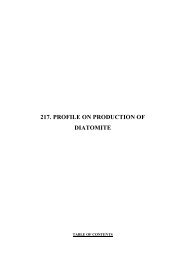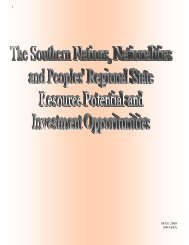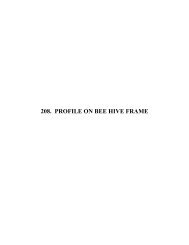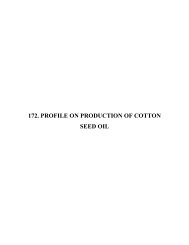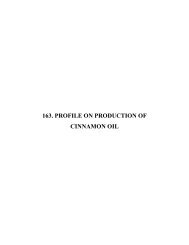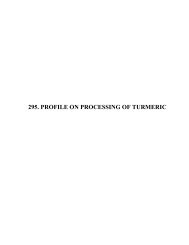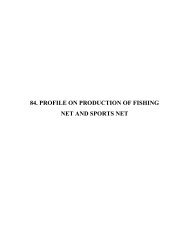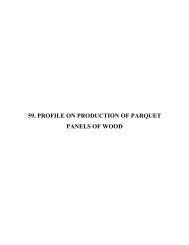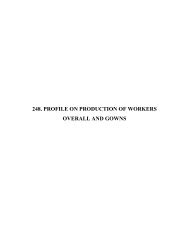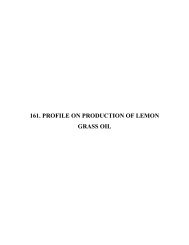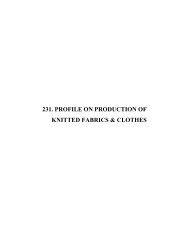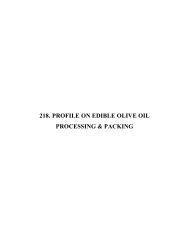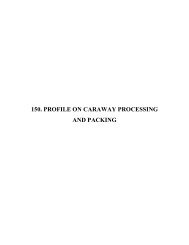Profile for the Production of Fibre From Kenaf and Sisal - SNNPR ...
Profile for the Production of Fibre From Kenaf and Sisal - SNNPR ...
Profile for the Production of Fibre From Kenaf and Sisal - SNNPR ...
You also want an ePaper? Increase the reach of your titles
YUMPU automatically turns print PDFs into web optimized ePapers that Google loves.
223-8<strong>and</strong> 2500 tons <strong>of</strong> kenaf fibre will be annually produced. It is estimated that <strong>the</strong> raw sisalleave <strong>and</strong> kenaf stalk will cost Birr 1.75 per kg. Thus, <strong>the</strong> annual raw material cost at fullcapacity production is estimated to be Birr 23,633,750.B. UTILITIESElectricity <strong>and</strong> water are required in sisal <strong>and</strong> kenaf production, electricity is required <strong>for</strong>running production equipment <strong>and</strong> lighting purposes. Water is required <strong>for</strong> washing <strong>the</strong>fibres, <strong>for</strong> sanitation <strong>and</strong> human consumption. It is estimated that annual electricityconsumption will be 24,000 kWh, where as annual water consumption will be Birr 2000.Thus, <strong>the</strong> total expenditure on water <strong>and</strong> electricity will be Birr 13,376.V. TECHNOLOGY AND ENGINEERINGA. TECHNOLOGY1. <strong>Sisal</strong> <strong>Fibre</strong>The fibres are extracted from <strong>the</strong> leaves <strong>of</strong> <strong>the</strong> plant (Agave sisalana) normally grown in<strong>SNNPR</strong>S. The agaves have rosettes <strong>of</strong> fleshy leaves, usually long <strong>and</strong> narrow, whichgrow out from a central bud. As <strong>the</strong> leaves mature <strong>the</strong>y gradually spread out horizontally<strong>and</strong> are 1-2 meters long, 10-15 cms wide, with a thickness <strong>of</strong> about 6 mm at <strong>the</strong> centre.The fibres are embedded longitudinally in <strong>the</strong> leaves, <strong>and</strong> are most abundant near <strong>the</strong> leafsurfaces. The leaves contain about 90% moisture, but <strong>the</strong> fleshy pulp is very firm <strong>and</strong> <strong>the</strong>leaves are rigid. The fiber is removed when <strong>the</strong> leaves are cut because dry fibers adhereto <strong>the</strong> pulp. The fiber is removed by scraping away <strong>the</strong> pulpy material, generally by amechanical decortications process.In decortications, <strong>the</strong> leaves are fed through sets <strong>of</strong> fluted crushing rollers. The crushedleaves are held firmly at <strong>the</strong>ir centers <strong>and</strong> both ends are passed between pairs <strong>of</strong> metaldrums on which blades are mounted to scrape away <strong>the</strong> pulp, <strong>and</strong> <strong>the</strong> centers are scraped



